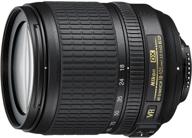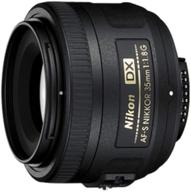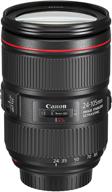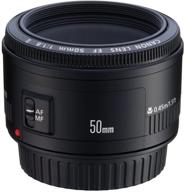
Review on Enhanced Canon EF-S 60mm f/2.8 Macro Lens by Sam Davenport

A sharp lens for macro and portraits.
There are two things I want to do here. I'll look at the 60mm lens first. Next I want to talk about the difference between a 60mm macro lens and a 100mm macro lens as they are often compared to each other. I want to talk about the technical side of this lens; Pluses and minuses, pluses first... 1. Very sharp. Let's face it, sharpness is probably high on the list of what makes a good lens, and this lens has it down to the last detail. Check out some sample shots to see what I'm talking about. This lens is my sharpest and is in my 70-200 F2.8L bag. Especially with 1:1.2 magnification, a fixed focal length can hardly be surpassed in terms of sharpness. The magnification ratio is 1:1. By the way, this is a real macro lens with a magnification of 1:1. Most lenses don't have this feature, only macro, and it's essential for the highly detailed shots that macros are known for.3. The wide aperture - F2.8 - is quite a large aperture, which reduces depth of field quite subtly (especially close-up) and allows this lens to perform well in low-light conditions as well. This allows you to add that bokeh effect you always want to your photos and also makes the 60mm lens a good portrait lens. It's fairly sharp in the center at F2.8, but slightly softer in the corners. As you decrease the aperture, the corners become sharper, which is quite common with macro lenses.4. USM Focus - Quiet and fast, USM is considered by most to be the best focusing option. There's also permanent manual control with this focus, which is very useful for macro photography (read on for an explanation). The mechanical focus ring gives good feedback for manual focus. Also, all focusing is internal, so the lens doesn't pop out and the front element doesn't rotate (handy for filter users). I think it's worth mentioning that this lens doesn't focus as quickly as other USM lenses and isn't ideal for action scenes. It's not entirely useless, it's just that you might be better off using a different lens if you want to use one for this. focus window. A useful thing for the lens, the focus window helps set the focus at infinity.6. BUILT TO LAST - Good build quality, metal bracket. Take care of it and it will serve you for a long time. I've had mine since 2010 and it still works great with no noticeable damage to the case or components. minuses; it really deserves more information to post there, not really worth one star.1. APS-C only. Our apologies to all full frame camera users, but 60mm is only for cameras with low crop ratios. This is only a scam if you don't have a crop camera, but since I see the question "does this fit my (insert camera here)" so often, I wanted to post that information here. If you have a Rebel, a mid-range case (like 80D etc) or a 7D, it will fit. If you have 1D, 5D or 6D it won't. In that case, check out the 100mm macro I'll cover in a moment. focus hunt. All macro lenses suffer from focus hunting once you get close to the minimum focus distance. where the camera looks for the object inside and outside. There are several technical reasons for this; I'll omit all the details, but basically what the camera uses to autofocus is either reduced (contrast, light) or too hard to see. This is common and that's why people tend to use manual focus for macro photography. Unlike some of the more expensive macros, this one doesn't have a focus limiter. It should also be noted that there is a slight change in magnification during focusing known as focused breathing. This isn't really a problem for still images, but videographers aren't usually that enthusiastic about it. If you still want to use autofocus, it's best to use full-time manual control to focus close enough, then press the shutter button halfway. Minimum focus is 6 inches from the sensor, or about 3 inches from the end of the lens. I'm listing this as a scam for a reason; it's too close except in certain situations. The closer you get to the subject, the less light falls on it, which is important for macro photography. Also, all living creatures (insects, birds, etc.) are likely to be scared away even before you get close to them. I took some close-ups of the spiders, but even then I had to use a ring light to illuminate them and it's not very ideal (no way to measure). There are other options such as B. a macro flash that attaches to the end of the lens, but they are expensive. This is fine in certain situations, but if you want to capture nature shots with this lens, it's best to use a longer focal length. However, I'm not deducting a star for that; As it is one of the lens properties listed, the user must know how to use it. It's like taking a star off an F4 lens because it's an F4 lens. I just want to make sure interested people understand this limitation before spending $400 on this lens. With all that said, I want to talk about the EF 100mm F2.8 Macro USM. This lens often seems to be compared to the 60mm lens as both are suitable for APS-C cameras, although the 100mm lens is a full frame lens. Let me tell you when one might be better than the other and hopefully this will help you make a more informed choice. 100mm is generally considered safer in the following situations: 1. More workspace - 100mm minimum focus gives you about 6 inches to work around your subject, while 60mm is closer to 3 inches. This gives you more room to light your subject, which is hard to do with macro photography. . It also gives your subject more personal space, which is useful when those objects are things like insects and other creatures that might run away from you. Longer Range - The extra 40mm range also gives you much better wildlife/nature shots if used for their intended purpose. And on an APS-C camera, the lens barrel is closer to 160mm. So you end up with some great shots of a dragonfly/butterfly/bee/spider or whatever you want to get close to with ridiculous sharpness. It is ideal for capturing small and tiny objects and things. The 60mm lens lacks the range to capture tiny objects, although I did get some good shots of spiders with it.3. The price isn't much more - not to mention the L lens with IS; I'm talking about the EF 100mm F2.8 Macro USM. Some say you can find this lens for around $80 more than the 60mm lens. Maybe it was true when 60mm was new, but now it's closer to $150-$200. Still not too big of a leap for all the benefits it has. When it comes to choosing the right lens for the job, it's probably worth the investment.4. Full Frame - If you have a full frame camera then 60mm is not even an option for you as I mentioned in the review. Although 100mm is a great option. Even if you have a crop camera and one day switch to full frame, 100mm will still work for you. Here's a list of things 60mm can do better if you have to account for them... 1. Copy stand. If you've never heard of a copy stand, ignore it as you don't need it. If you have and are looking for a lens for one, then this is the lens. Canon users who have copy stands seem to like it everywhere. Its focal length and overall sharpness make it ideal for this purpose. portraits. On a camera with an APS-C sensor, the 60mm has become my go-to portrait lens for full-length shots. So much detail and great bokeh, I never cease to be amazed by his abilities. 100mm is great for that too, but with APS-C you lose too much angle of view to use it for anything other than head shots and you're better off using a telephoto lens (e.g. 70-200mm) for that anyway. . So for APS-C, 60mm is better for portraits. Check out the photos for some examples.3. Food/Product Lens - I've never used it for food, but I've read of many bloggers who do. Its angle of view and focusing distance make it ideal for shooting food or any type of product that requires a tight frame with great detail. I bought mine to sell things on eBay; In particular, I drew models and miniatures, and this lens showed detail well. I definitely got the best price on stuff because my shots looked good. General purpose, sort of - not as useful as a zoom lens, but in open areas this lens is good for general use; 100mm would be too narrow for general use. I took this lens to an indoor aquarium and got some great shots. The large aperture makes it good in low light, so that wasn't an issue. I'd say the EF 50mm F1.8 STM is probably the best choice for the money for this purpose, so I wouldn't buy a 60mm just for that; make it work with macros and then use it for other purposes. It's just that I already had the 60mm, so I didn't need the 50mm (although this 50mm is so cheap that almost anyone can get it, be happy with it). Keep in mind that both of these lenses are SUPER sharp. , and serve their purpose. Without knowing your intended use, I only assume general macro shots. They're both excellent lenses and you'll find good uses for both. I hope this helps you decide. Thank you for reading my review!
- A field of view of 25 degrees is equivalent to a 96mm lens on a 35mm camera
- Ugly packaging
New products
Comments (0)
Top products in 👓 Lenses

New Nikon 18-105mm Vibration Reduction 📷 Zoom Lens with Auto Focus for Nikon DSLRs

104 Review

Nikon 35mm f/1.8G Auto Focus Lens for Nikon DSLR Cameras - Black (Model 2183)

125 Review

Black Canon EF 24-105mm f/4L IS II USM Lens - Model 1380C002

78 Review

Canon EF 50mm f/1.8 II Fixed Lens - Discontinued by Manufacturer

93 Review






